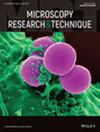Simple and low-cost microscopy setup for 3D particle field measurement using incoherent illumination and open-source hardware
Abstract
The quantification of 3D particle field is of interest for a vast range of fields. While in-line particle holography (PH) can provide high-resolution measurements of particles, it suffers from speckle noise. Plenoptic imaging (PI) is less susceptible to speckle noises, but it involves a trade-off between spatial and angular resolution, rendering images with low resolution. Here, we report a simple microscopy setup with the goals of getting the strengths of both techniques. It is built with off-the-shelf and cost-effective components including a photographic lens, a diaphragm, and a CCD camera. The cost of the microscopy setup is affordable to small labs and individual researchers. The pupil plane of the proposed setup can be mechanically accessible, allowing us to implement pupil plane modulation and increase the depth of field (DOF) without requiring any additional relay lenses. It also allows us to understand the working principle of pupil plane modulation clearly, benefiting microscopy education. It illuminates the sample (particles) using diffuse white light, and thus avoids the problem of speckle noise. It captures multiple perspective images via pupil plane modulation, without requiring trading off angular and spatial resolution. We validate the setup with 2D and 3D particle samples.
Research Highlights
We report a simple and cost-effective microscopy setup with the goals of getting the strengths of plenoptic imaging and in-line particle holography. It is built with off-the-shelf and cost-effective components. The cost of the microscopy setup is affordable to small labs and individual researchers. The pupil plane of the proposed setup can be mechanically accessible, allowing us to implement pupil plane modulation and increase the DOF without requiring any additional relay lenses. It also allows us to understand the working principle of pupil plane modulation clearly, benefiting microscopy education. It illuminates the sample (particles) using diffuse white light, and thus avoids the problem of speckle noise. It captures multiple perspective images via pupil plane modulation, without requiring trading off angular and spatial resolution. We validate the setup with 2D and 3D particle samples.

 求助内容:
求助内容: 应助结果提醒方式:
应助结果提醒方式:


